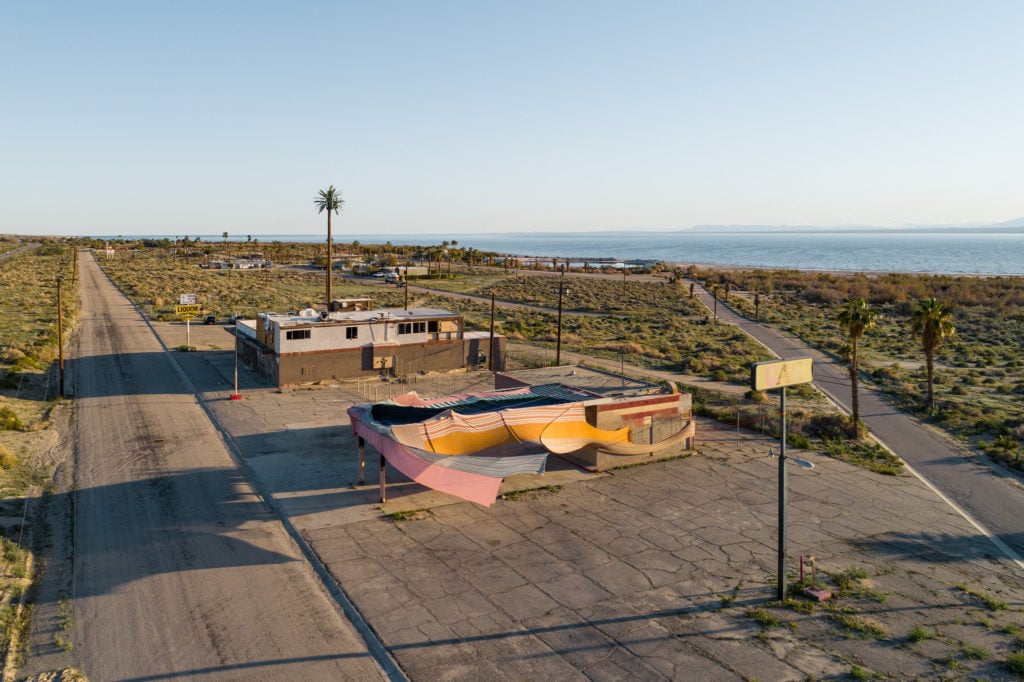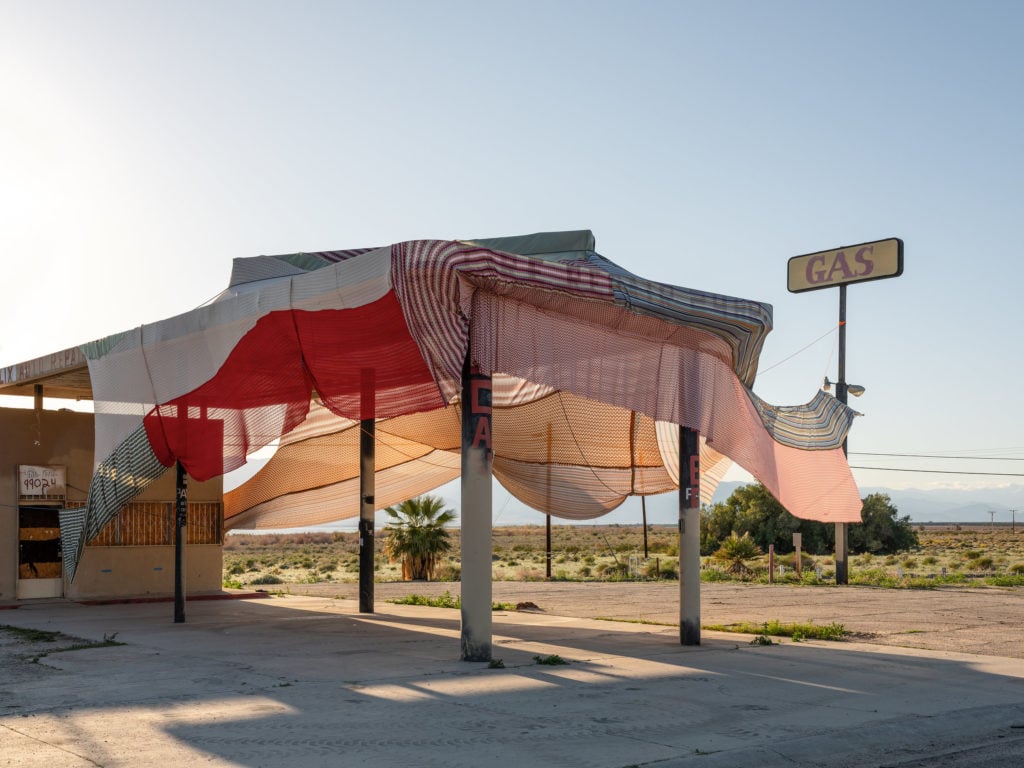Art World
A Poetic Artwork by Eric Mack Was Burned to the Ground at Desert X. Was It an ‘Act of Hate’?
The artist calls it a violent action. The show's artistic director isn't so sure.

The artist calls it a violent action. The show's artistic director isn't so sure.

Taylor Dafoe

Desert X, the outdoor biennial that opened its second edition in the Coachella Valley last month, may have been hit by a vandal.
On Sunday night, Eric N. Mack’s Halter, a work made of swaths of fabric donated by Italian fashion house Missoni and draped across an abandoned gas station, was intact and rippling in the mild desert breeze. By Monday morning, it was gone.
Exactly what happens remains unclear. Representatives for Desert X filed a report with the Riverside County Fire Department Tuesday morning, suggesting that there was “fire involved.” One Desert X artist, Chris Taylor, also reported finding evidence of flames. “The rope ends are all burnt,” he told the Desert Sun. “Also there’s burn marks on the ground and on what little is left of the fabric.”
On Tuesday evening, Mack posted a statement to his Instagram account addressing the incident: “I am overwhelmed by the news that my work Halter was vandalized, burned, and stolen from its Desert X site yesterday. As I process the loss of this artwork that I and many others worked tirelessly to realize, I am only pacified by knowing that many visitors experienced and appreciated it as it was. While the violence and hate enacted on this installation is astounding, I will not allow for this disregard to become a gesture that obstructs nor defines this work of art.”
But Desert X’s artistic director, Neville Wakefield, is declining to guess at why the work was destroyed. “I think it’s important to emphasize that we don’t know what the motive was, or if was an act of hate,” he says. “I think that kind of speculation doesn’t really do honor to the work.”
“We’re working with conditions over which we don’t have a great deal of control,” Wakefield says. “It affects the artwork and what happens to it. It’s part of the excitement and the unpredictability of the show. In this case, it was unfortunate.”
Mack has not responded to artnet News’s request for comment.
Despite these events, organizers have no intention to institute additional security measures around other works in this year’s show or future editions. Nor are there plans to reinstall Mack’s work.

Eric N. Mack’s Halter (2019) before it was destroyed. Courtesy of Desert X.
“You have to celebrate the life of these works,” Wakefield says. “It’s not like a gallery show where you can just replace it with another. You have to enjoy the memory. The beauty of the piece was that it was extremely fragile, ephemeral, diaphanous work. The fact that it has succumbed to its own fragility might add to the narrative.”
This isn’t the first time a work of art at Desert X has been damaged. In the first edition of the show in 2017, Richard Prince’s installation Third Place was closed to the public “due to the theft and removal of artworks.”